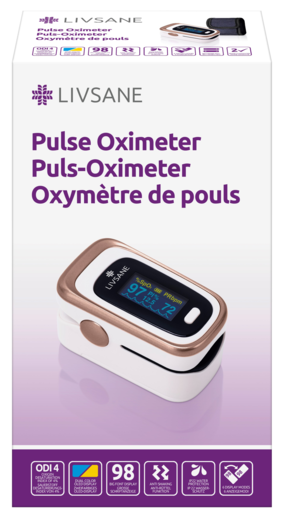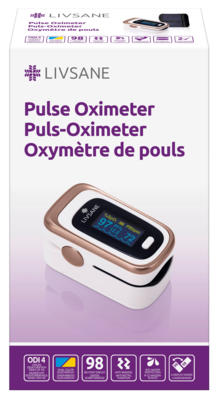Blood Oxygen Saturation (SpO2): The SpO2 reading is an estimation of the amount of oxygen in your blood. An SpO2 reading of 95% - 100% is generally considered to be a normal oxygen level. However, an SpO2 reading of 92% or less (at sea level) suggests that your blood is poorly saturated. Insufficient saturation can cause a range of adverse health conditions, including chest pain, shortness of breath and increased heart rate.
Pulse Rate: Your pulse rate is an estimation of the number of times your heart contracts per minute. Normal pulse rate values for adults range from 60 to 100 beats per minute (bpm). In general, a lower heart rate at rest implies more efficient heart function and better cardiovascular fitness. For some people, a pulse rate below 60 bpm indicates abnormally slow heart action, also known as bradycardia. Bradycardia can cause a number of problematic symptoms, including fainting, fatigue, chest pains and memory problems.
Note: SpO2 and pulse rate measurements outside the normal range aren’t always a sign of health problems. For example, your heart rate can be expected to increase during exercise, and oxygen saturation may decrease slightly (it should still remain at 90% or greater).



